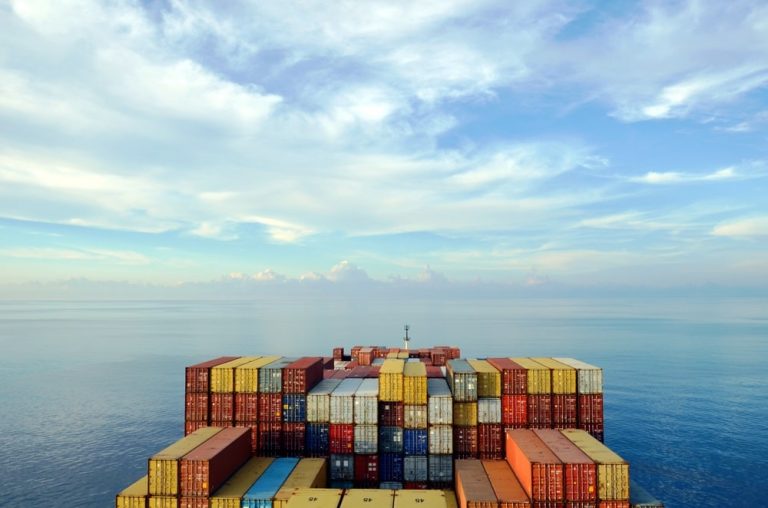One of the first signs of a strong American economy is felt first by the demand for freight and drayage at American ports. Goods flow in from other manufacturing countries, and some of our raw materials are also exported to overseas buyers and producers who rely on America’s rich natural resources.
In 2019, the political relationship between the United States and China has been strained, leading the U.S. Government to impose some significant trade restrictions, in an effort to balance our export versus import ratio. The United States has structured new tariffs that will directly target imported goods and materials originating from China.
In this article, we’ll talk about the trade war from the context of the trucking and drayage industry. We will explain how the demand for the trucking industry is closely linked to the success of the import and export market, and why it is important for American businesses to think on a global scale when it comes to our shared economic growth.
Understanding the Trade Deficit Between America and China
It’s not hard to imagine why most of our consumer electronics and computer hardware come from China. Over two decades ago, China began to rapidly innovate manufacturing technologies that quickly put them at the front of the line, when it came to producing electronics. In fact, we’re used to seeing MADE IN CHINA on virtually every consumer electronics good we buy.
But that is not the only niche consumer product that the Chinese economy became skilled at producing. Most of the clothes we buy, particularly at large retailers like Walmart, come from China. Fashion is another strong product niche that is almost all but dominated by China. The addition of Amazon e-commerce and websites like Wish.com, allows manufacturers to sell directly to consumers as well.
Other websites like AliExpress.com provide millions of Chinese manufactured products that are drop-shipped to American consumers. The growing e-commerce market, and private American business owners who have set up a Shopify or Woocommerce store, source all their wholesale priced products from AliExpress and similar international marketplaces.
How big is the scale of the trade deficit between the United States and China? Here are a few examples to help you understand the gap, and why the United States is taking such extreme measures to try to address it (for the benefit of American businesses).
Chinese Manufactured Products (Imported to the United States) in 2018:
- $77 billion dollars in computer and technology goods
- $70 billion dollars in smartphones
- $54 billion dollars in footwear and fashion apparel
That same year, these were the top three exports from the United States to China:
- $16 billion dollars in commercial aircraft
- $12 billion dollars in soybean
- $10 billion dollars in automobiles and commercial vehicles
Source Web 2019: The Balance
When you start to look at the numbers, it’s not hard to understand why economic advisors and government officials are more than concerned. You see, China’s exports to other countries are also astronomical; the difference is, that we are their top buyer. There has not been an effort to grow the value of the imports from America to China, in spite of the fact that the country’s manufacturing super engine needs more raw materials.
To sum it up in a more simple way? America is China’s best customer, but not China’s first choice when it comes to sourcing the raw materials and consumer goods it needs. And since the cost of producing consumer and commercial goods is much lower in China (thanks to lower pay for employees) it is getting increasingly more difficult for American manufacturers to compete. Think about how much more difficult it is to find a “Made in America” product label than one that says’s “Made in China”.
According to the most recent data released by the United States Census Bureau, the long-running trade deficit from 2012 to 2018 has averaged over $110 billion dollars per year. A fact that is staggering the growth and success of manufacturers here in the United States.
That is the root intention and cause behind the trade war currently between the United States and China. And while the trucking industry has benefited from the increased number of commercial and consumer goods importing for drayage services, a slowdown in the number of goods arriving at U.S. ports for rail or road delivery may have a negative impact for carriers.
A Fight Over Patented Technology
One of the things few people know is that the United States protects the technology patents held by American owned businesses. One of the demands that China (the world’s largest economy) has made on the United States, is that the trade secrets or open-source programming and methods of producing certain materials be shared.
What that would mean for American businesses who hold technology patents, is that China would have access to those assets. Subsequently, after gaining access to those trade secrets and data, China would also be able to expand the products they can manufacture; putting them in direct competition with the American companies that produce them.
China has two main economic advantages. First, they are located in an optimized area to provide products to the other half of the world, including all of the Asia Pacific countries, the UAE and Europe. The second advantage is that the country enjoys a lower cost of living (the average household makes less than $17,000 per year). Wages paid to workers are much lower than wages that are paid by manufacturers in any other country; this keeps the production prices of their goods at sub-competitive levels.
China has expressed that it will not buy a large number of American produced products or raw materials for manufacturing unless the protections against the U.S. held patents and methods are made available to them. Since this would be a ‘bad deal’ for American manufacturers, China has limited the number of products they purchase from U.S. companies.
The Impact for the Trucking Industry
In the Port of Houston Texas alone, more than 44% of imports originate from China and other manufacturing countries. Northern European countries are responsible for the next highest level of import business through the Port of Houston, representing 20% of all containers that arrive for distribution. In 2001, there were just over 1 million containers arriving at the Port of Houston, but in 2018, over 2.8 million containers were received for drayage carriers. And that number has continued to increase.
A large majority of American businesses and manufacturing companies rely on the goods and components that are shipped from China. In fact, liquid bulk materials represented over 60% of the goods received at the Port of Houston in 2018. Those goods include cooking oil, industrial chemicals, crude oil, and liquefied natural gas.
To learn more about how the trade war between the United States and China may impact the American trucking industry, in this CNBC feature.



